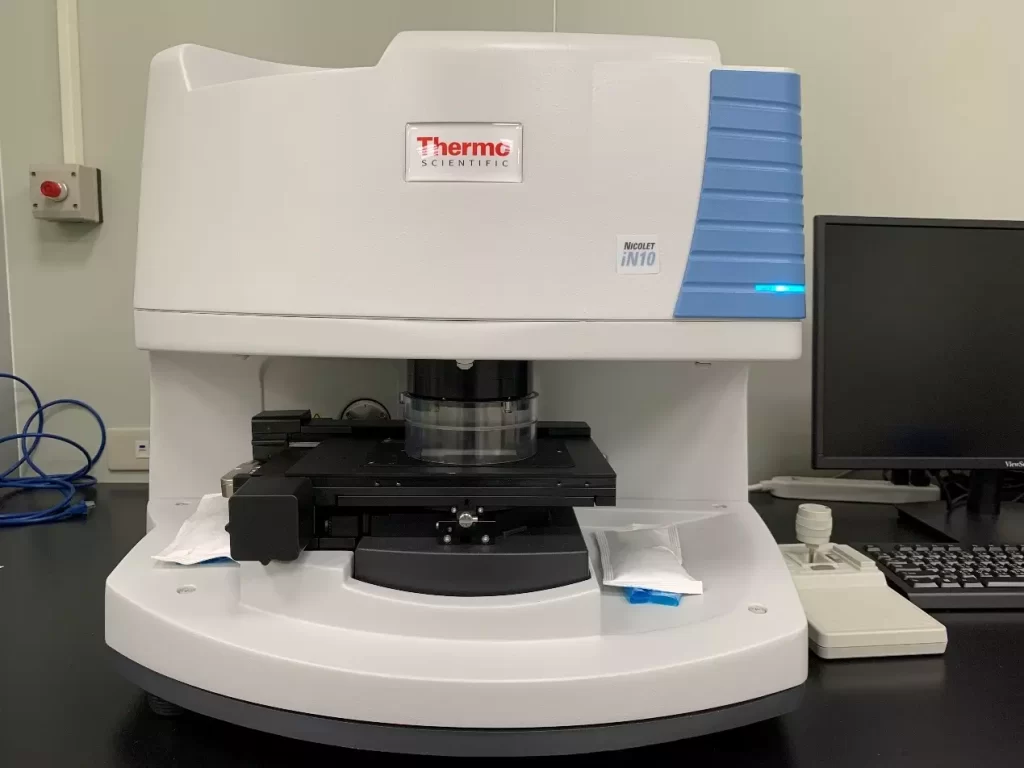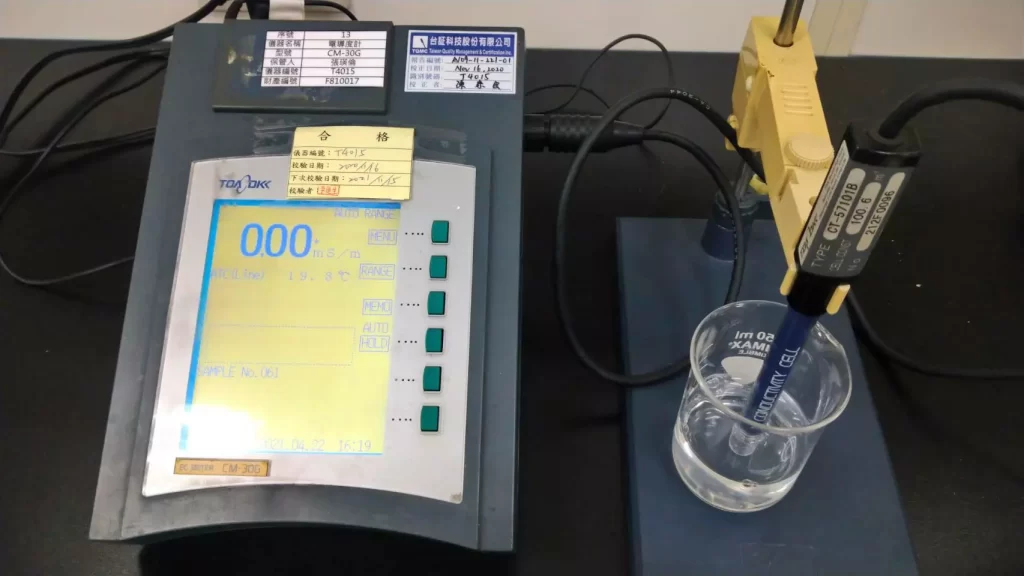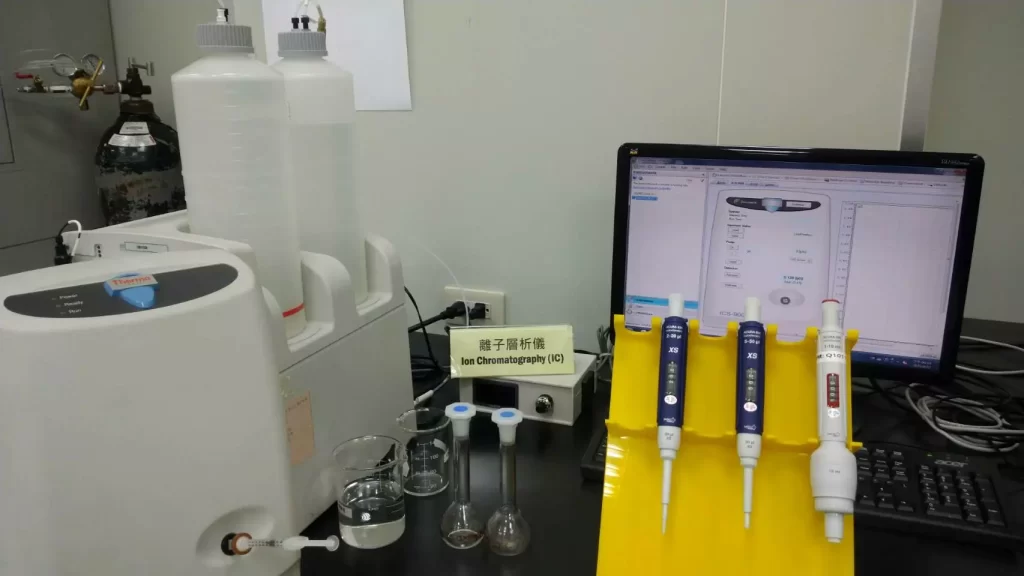
FT-IR, Fourier-transform Infrared Spectroscopy
Fourier-Transform Infrared Spectroscopy (FT-IR) is used to detect various bonding structures in the molecules of liquid and solid samples. It works by observing the energy changes between molecular vibrational and rotational levels as they absorb appropriate infrared energy, thereby obtaining their absorption spectra.
The infrared spectrum can be considered as the “fingerprint” of an unknown substance. This spectrum is then compared with existing spectra in a database for material research and analysis. Therefore, FT-IR can be used to confirm the presence of organic films on the surface of circuit boards, or to identify contaminants that appear in various industrial processes.

Ionizable Surface Contaminants
The Resistivity of Solvent Extract (ROSE) Test is an analytical method that measures the resistivity of extracted solutions. It employs a conductivity meter in accordance with IPC TM-650 2.3.25 to quantitatively test for ionic residues on the surface of circuit boards. The test results provide a total ionic residue value, which can be used to determine the amount of ionic residue on the circuit board.
For a more precise analysis of the residues on the board or to identify their sources, Ion Chromatography (IC) is recommended. This testing method, in line with IPC TM-650 2.3.28, allows for further analysis of the types and concentrations of residual ions.

IC, Ion Chromatography
IC utilizes chromatographic principles to separate and qualitatively and quantitatively (in parts per million, ppm) analyze different types of ions in a solution. It offers the advantages of simultaneous analysis of multiple ions and high reproducibility.
- Halogen Testing: As per the standard BS EN 14582, the method uses an oxygen bomb for sample pre-treatment. This is followed by qualitative and quantitative analysis of halogen content using ion chromatography.
- Halide Testing: In accordance with the standard IPC TM-650 2.3.28.1, sample pre-treatment involves solution dilution and a water bath method. Subsequently, ion chromatography is used for qualitative and quantitative analysis of halide content.